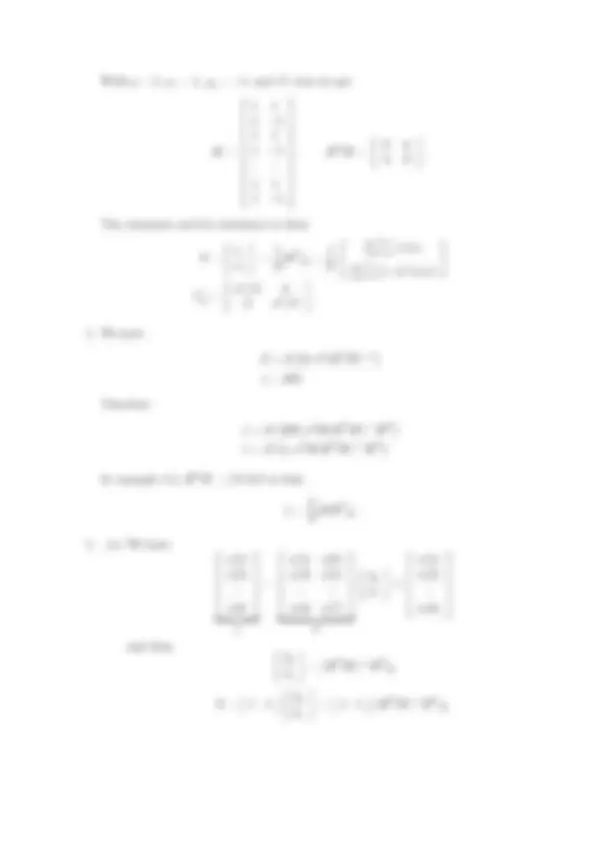




Study with the several resources on Docsity

Earn points by helping other students or get them with a premium plan


Prepare for your exams
Study with the several resources on Docsity

Earn points to download
Earn points by helping other students or get them with a premium plan
Community
Ask the community for help and clear up your study doubts
Discover the best universities in your country according to Docsity users
Free resources
Download our free guides on studying techniques, anxiety management strategies, and thesis advice from Docsity tutors
Material Type: Assignment; Class: Statistical Signal Processing; Subject: Electrical and Computer Engr; University: Illinois Institute of Technology; Term: Spring 2008;
Typology: Assignments
1 / 4

This page cannot be seen from the preview
Don't miss anything!



Homework Assignment #
Solutions
p(x; θ) = (2πσ
2 )
−N/ 2 exp
2 σ
2
n=
x(n) −
p− 1 ∑
k=
Akn
k
ln(p(x; θ)) = −
ln(2πσ
2 ) −
2 σ^2
N − 1 ∑
n=
x(n) −
p− 1 ∑
k=
Akn
k
∂ ln(p(x; θ))
σ^2
N − 1 ∑
n=
x(n) −
p− 1 ∑
k=
Akn
k
n
`
2 ln(p(x; θ))
∂AmA`
σ^2
N − 1 ∑
n=
n
m n
`
2 ln(p(x; θ))
∂AmA`
σ
2
N − 1 ∑
n=
n
m+`
so that
I(θ) =
σ
2
n=0 n^
n=0 n
2 · · ·
n=0 n
p− 1
n=
n · · ·
n=
n
p− 1
n=
n
p · · · · · ·
n=
n
2 p− 2
x =
x(0)
. . .
x(N − 1)
x(0)
. . .
x(N − 1)
μ
C
Using (3.32) from the text we have
I(ρ) =
tr
− 1 (ρ)
∂C(ρ)
∂ρ
since the mean doesn’t depend on ρ. Then
∂C(ρ)
∂ρ
− 1 (ρ) =
1 1 −ρ^2
1 −ρ
−ρ 1
1 1 −ρ^2
1 −ρ
−ρ 1
− 1 (ρ)
∂C(ρ)
∂ρ
1 1 −ρ^2
−ρ 1
1 −ρ
1 1 −ρ^2
−ρ 1
1 −ρ
− 1 (ρ)
∂C(ρ)
∂ρ
1 (1−ρ^2 )^2
1 + ρ
2 − 2 ρ
− 2 ρ 1 + ρ
2
1 (1−ρ^2 )^2
1 + ρ
2 − 2 ρ
− 2 ρ 1 + ρ
2
and then
1
tr
− 1 (ρ)
∂C(ρ)
∂ρ
N (1 + ρ
2 )
(1 − ρ
2 )
2
so that finally
var[ˆρ] ≥
(1 − ρ
2 )
2
N (1 + ρ^2 )
x(0)
. . .
x(N − 1)
x
r 1 r 2 · · · rp
. . .
r
N − 1 1 r
N − 1 2 r
N − 1 p
H
Ap
w(0)
. . .
w(N − 1)
and then
θˆ = (HT^ H)−^1 HT^ x
Cˆθ = σ
2 (H
T H)
− 1 .
(b) We get
Cb = σ
2 (H
T H)
− 1
θ
= σ
2
T H)
− 1
(c)
θ = 3. 0125